
Tsagaan Sar, Mongolian Lunar New Year, is the celebration of the new year according to the Mongolian lunisolar calendar. The name of the holiday means White (Tsagaan) Moon (Sar), for the holiday is deeply connected to lunar phases such as Bituun (dark moon), Shined (new crescent moon), Tergel (full moon), and Huuchid (waxing moon). The history of Tsagaan Sar starts way back from the 13th century, as we can read about it from The Secret History of the Mongols.
This festival is one of the most important holidays in Mongolia. As a country that has harsh, cold and long winter, Tsagaan Sar is a heart-warming celebration for the arrival of spring.
The main reason for it is to get festive after tiring winter, to welcome the beginning of the warm spring, and to meet the whole family (extended and immediate). Many of the elders in Mongolia consider Tsagaan Sar as their birthday and count their age from the lunar calendar.
Preparation for The Lunar New Year
For Mongolians, Tsagaan Sar has great cultural and traditional significance. The preparation of the ceremony starts from almost a month before the actual date.
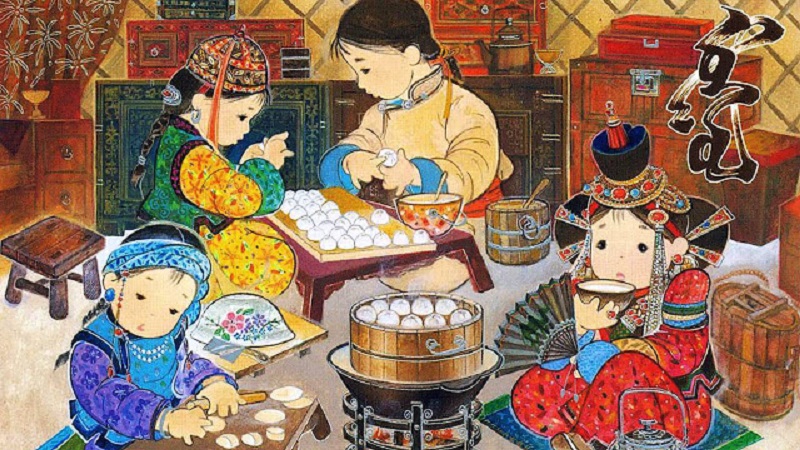
Food
Buuz - The most famous and well-known and fun part is to prepare hundreds of buuz (dumpling) for guests, freeze and preserve them. Buuz is a minced meat-filled dumpling that is served steamed. Buuz-making requires many people and quite a time. In this time, families gather in the home of the eldest and start making and rolling doughs, mincing meat and prepare fillings.
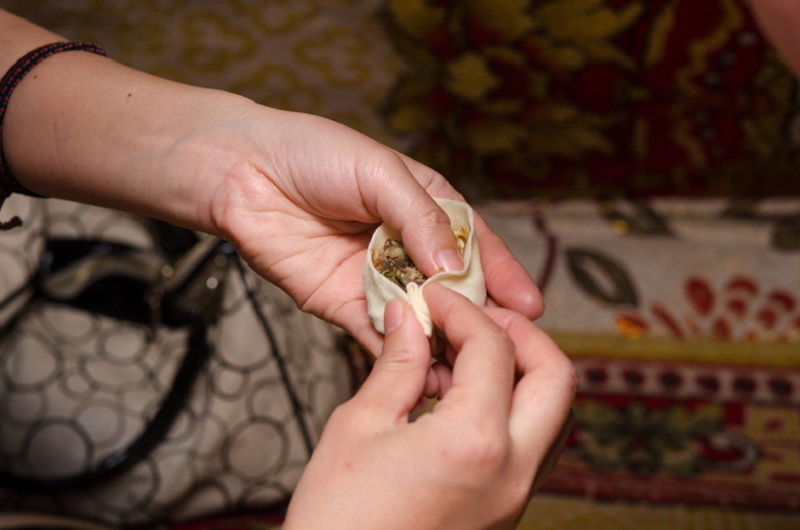
Meat – As a people from nomad heritage, meat is a big part of the diet of Mongolians. Tsagaan Sar table includes several pieces of boiled meat. Big chunks of meat are boiled or steamed a few days before the ceremony.
Dairy products – Dairy products are often prepared in the countryside by sheepherders. Citizens from the urban area usually buy the products from markets. The products include milk, cheese, dried curd, and butter.
Ul boov – On the table, you can spot piled up pastries with a decoration of dairy products. Each pile consists of an odd number of rows and mainly 20 pieces of ul boovs. Ul boov is made with flour, shar tos(butter from milk) and warm water.
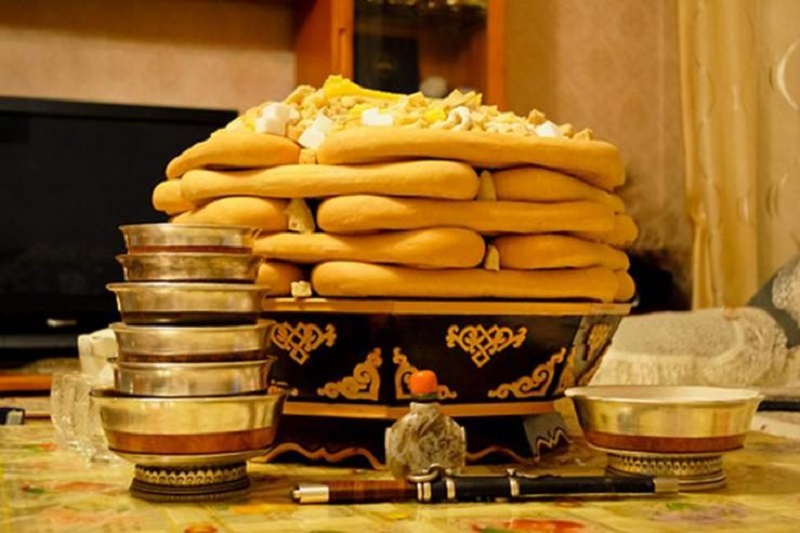
Gift
One of the traditions of Tsagaan Sar is gift-giving. Small gifts for guests can vary from cash in an envelope to everyday products, such as hygiene products or clothing. Elders prepare these gifts by changing their cash with crisp new ones and purchasing products.
Celebration of Lunar New Year
The festival is celebrated on the first three days of the first lunar month. In 2020, Mongolia will observe Lunar New Year between 24-26th Feb.
The celebration begins the day before Tsagaan Sar, Bituun – lunar phase of a new or dark moon. On Bituun day, people thoroughly clean around the home, herders also clean the livestock barns. To start the New Year fresh, there are few rituals people should complete, which include giving back what’s borrowed, end an argument or fights from the last year, apologize for mistakes.
In the evening, families gather together to see out the old year and have dinner together. The kids go on play traditional games, mostly with toys made with animal bones. At the night, before sleeping, they put three pieces of ice at the doorway for the horse of the deity Palden Lhamo to drink while he visits the family.
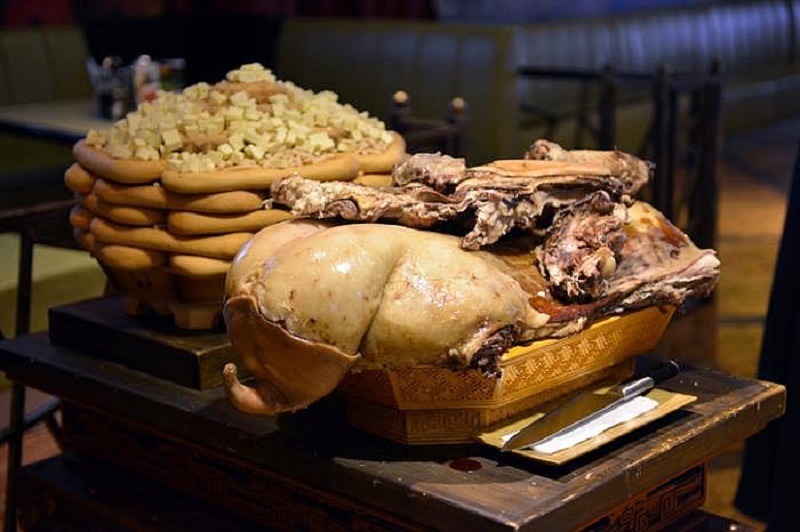
The morning of the White Moon is considered to be the most important day of the year for Mongolians. To have a happy and lucky new year, people should treat each other with kindness, avoid any sinful acts, wear their best clothes and clean our both body and mind. Wearing a traditional costume, deel, is common on this day.
The day begins when the head of the family goes out to do the ritual walking for the good luck of the year before the sun rises. Breakfast of the day consists only of hot milk tea most of the time, for the festival awaits people with a large feast. A small religious ritual is done in the morning, families burn incenses and pray for a successful and peaceful year.
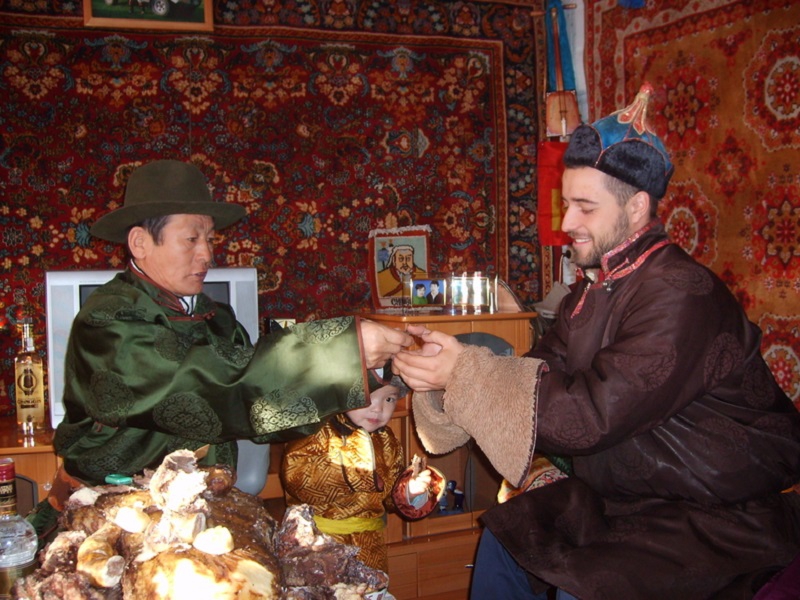
Gatherings begin at the home of the eldest relative of the family, usually the grandparents. It’s a day for Mongolians to meet the people who haven’t been in touch for a long time, to forgive each other and to get to know their relatives (which help them from inbreeding). With the sunrise, the traditional greeting called “zolgolt” begins.
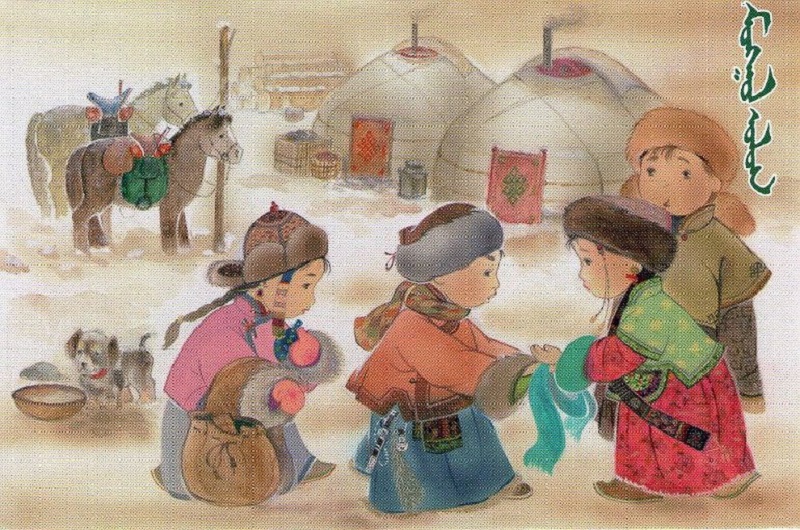
By performing “zolgolt”, where they grasp elders by their elbows, they consider that they give energy to the elders to help them to get through another year. The greeting sometimes includes “hadag”, long blue silk cloth. Greetings go on in a paternal order, starting with the oldest son greeting the father. Married couples don’t greet each other as they are considered to be one whole person.
After greeting, feast with a table full of traditional dishes begins. When the family leaves one’s home, a small gift for each person is handed. As there are multiple elders in families, a family usually attends about 3-5 such gatherings.